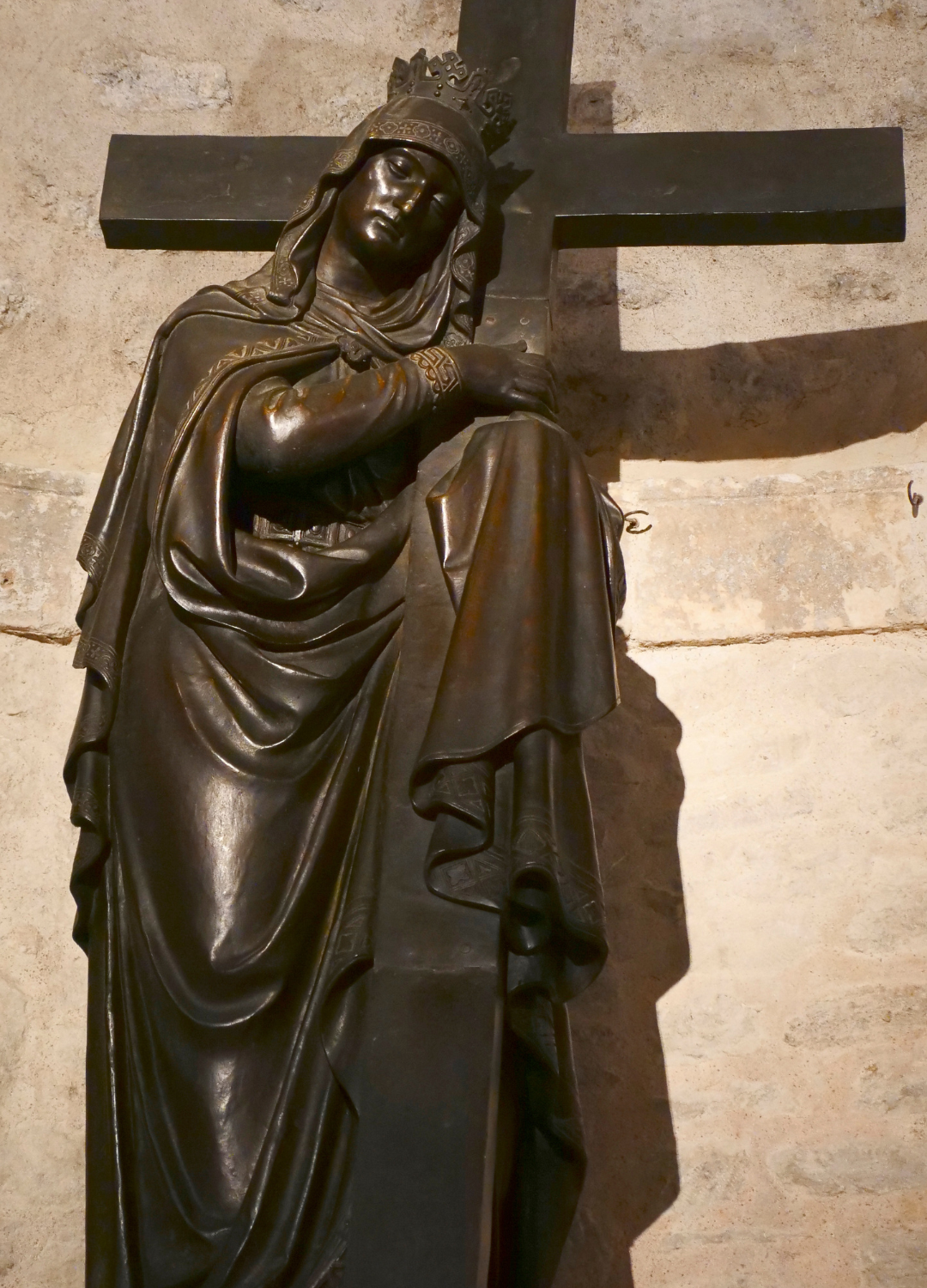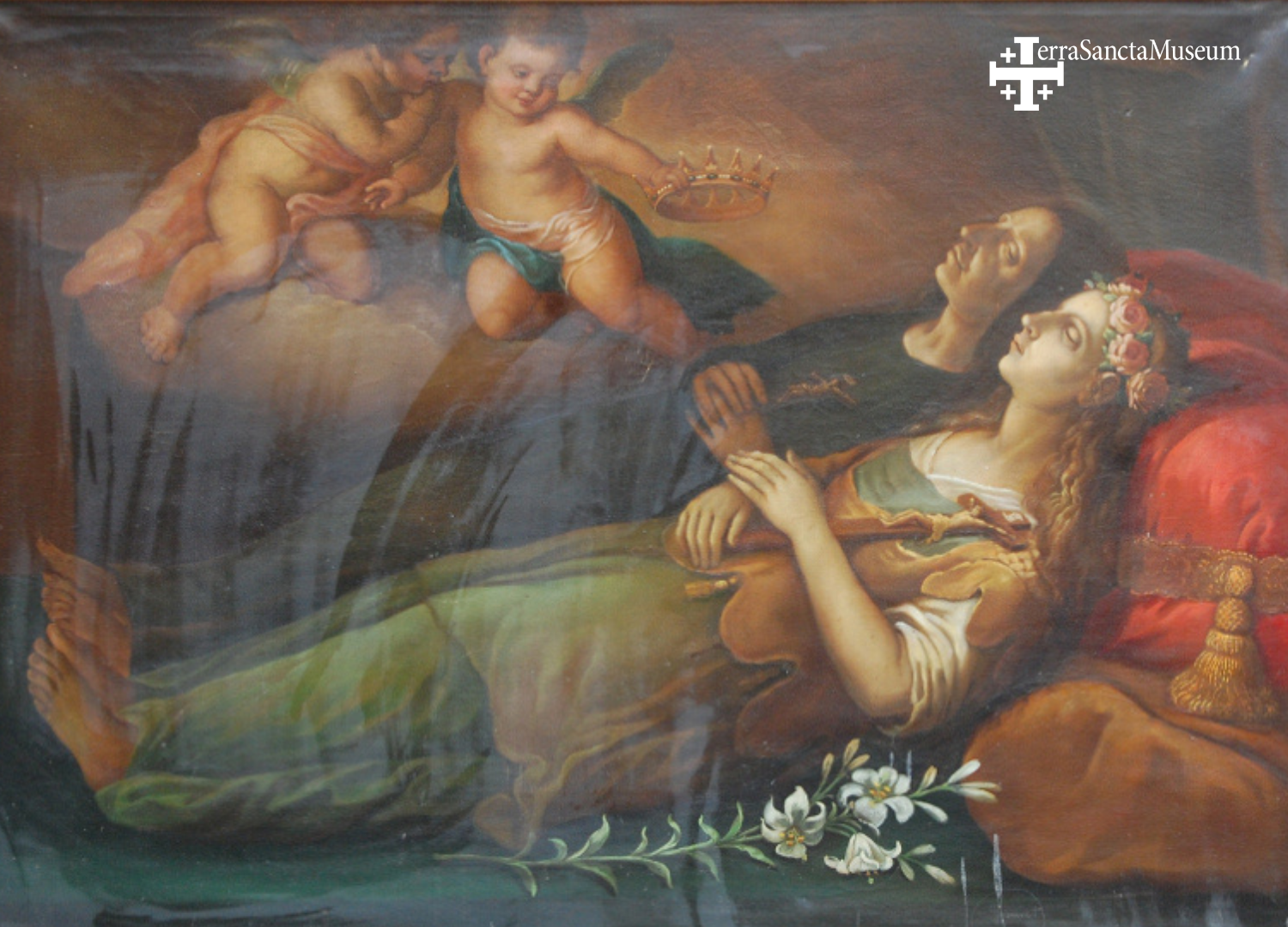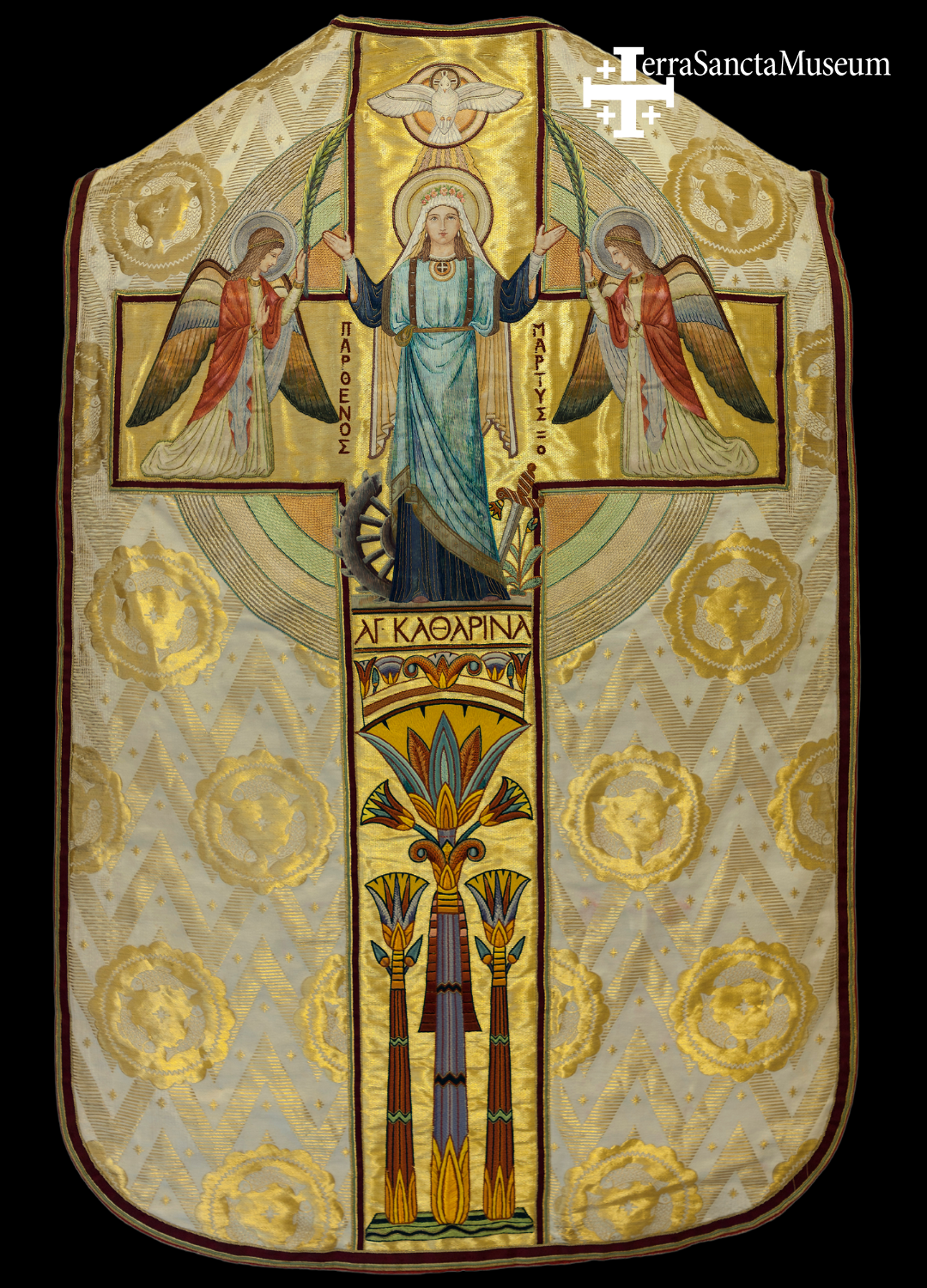The female saints of the Holy Land in the museum’s collections
In a previous article, we discovered the great prophets of the Old Testamente through the works of the Terra Sancta Museum. In this article we will be concerned with four major female figures whose actions were decisive for the building Christianity.
St Helena, the pilgrim and builder empress
The mother of the first Christian emperor, Constantine, Helena was born in Bithynia (the northern coast of present-day Turkey) in the middle of the 3rd century, in a modest family.
After converting to Christianity, in 326 she went on a pilgrimage to the Holy Land which is known to us through numerous sources such as Procopius, Eusebius of Caesarea, St Ambrose and St Paulinus of Nola. This journey left an indelible mark on the religious geography of the region : the empress discovered in Jerusalem the wood of the crucifixion on the place of Calvary. She ordered the basilica of the Nativity in Bethlehem, that of the Ascension on Mount Olive and that of the Holy Sepulchre in Jerusalem to be built, She died in around 329. Her feast-day in the Holy Land is 21 May.
The figure of Helena is essential in the collections of the Custody of the Holy Land where she is very often shown with the cross she found. Visitors to St Saviour’s Convent can admire this mosaic in the inner courtyard. The saint is portrayed in Byzantine robes, kissing the True Cross while looking upwards to the heavens.

The Palestinian craft of mother-of-pearl also seized on the figure of St Helena. In its collections, the Custody of the Holy Land has a magnificent 18th century piece where the saint is shown with the Cross but also with the nails of the crucifixion, discovered at the same time, which she is holding in her right hand.

The figure of Helena is of course present in the Holy Sepulchre. She is shown there by this sculpture offered at the end of the 19th century by the Emperor of Mexico, Maximilian I to decorate the chapel of the Invention of the Holy Cross.

Saint Paula and St Eustochium, the disciples of St Jerome
St Paula was born in Rome in 347 into a noble and Christian family. She married and had five children, including her daughter Eustochium. Widowed at thirty-three years old, she decided to live a life of piety and study alongside St Jerome, who had arrived in Rome in 382. When the saint left the imperial capital for Bethlehem, Paula joined him with Eustochium on a pilgrimage. They ended up by settling there and founding a female monastery which they later directed. They are celebrated in the Holy Land on 29 January.

These eminent two figures of the dawn of monasticism are shown in this 19th century painting kept by the Custody of the Holy Land in St Saviour’s Convent in Jerusalem. The Saints are shown there on their death beds with two angels. This work was previously on display in Bethlehem where it caught the attention of the famous French traveller and writer, François-René de Chateaubriand. He gives a gripping description of it in his travel account Itinerary from Paris to Jerusalem, published in 1811.
“In a touching idea, the painter gave the two saints a perfect resemblance, you can only distinguish the daughter from her mother by her youth and her white veil : one has walked for longer and the other faster in life; and they have reached the port at the same time.”
St Catherine of Alexandria, the patron saint of philosophers
Catherine was born in around 290 in Cilicia (today the southern coast of Turkey). She went to Alexandria where her great intelligence allowed her to study the greatest philosophers and thinkers of Antiquity.

Noticed by the emperor, she found herself one day in a philosophical joist with some 50 pagan orators. The young girl triumphed against her rivals and was even able to convert them to the only God of the Christians. Charmed by her intelligence and great beauty, the emperor suggested she become his concubine. Catherine refused, saying that she had already given herself as a bride to Christ and that nothing could move her from this mystic love. Furious, the rejected sovereign inflicted a terrible martyrdom on her on a spiked wheel before having her beheaded. Her body was taken by the angels to Mount Sinai. It was discovered there in the 8th century by monks who gave the saint’s name to their monastery, today one of the oldest still in activity.
She was worshipped in the Orient from the 5th century, before her cult spread to Europe following the Crusades. She is celebrated on 25 November in the Holy Land.
One of the most dazzling representations of the saint, in the collections of the Terra Sancta Museum, can be seen on this Austrian chasuble of 1932, made for the Franciscan convent of Alexandria and today kept in Bethlehem. The saint is accompanied by the two instruments of her torture. At her sides, the angels carrying the palms of martyrs are the same ones that collected her remains and carried them from Alexandria to Mount Sinai. The decorative motifs are in the Egyptian style with papyrus flowers and columns evoking this plant. The work is reminiscent of the Art Deco style typical of its period.



